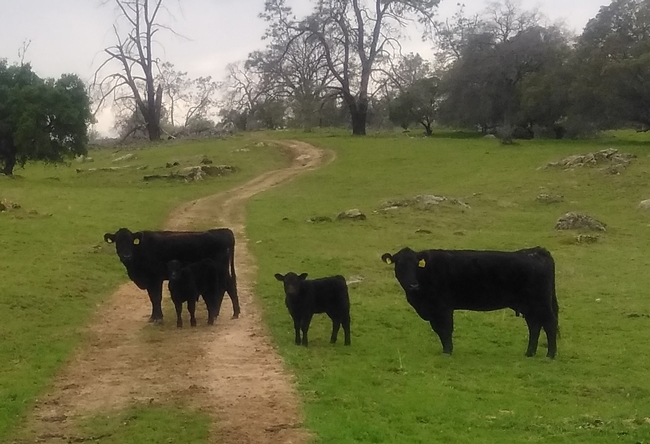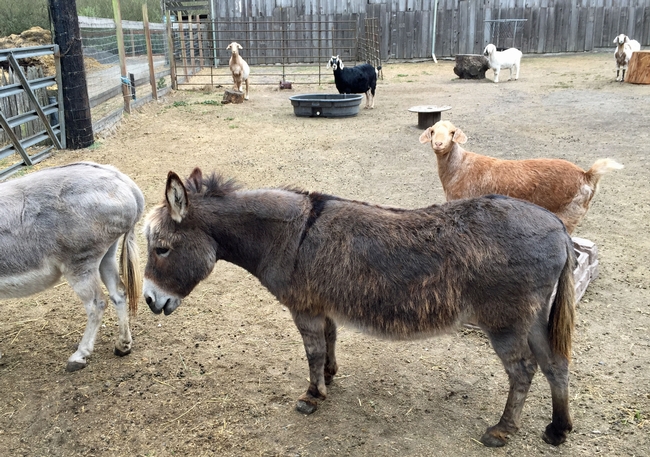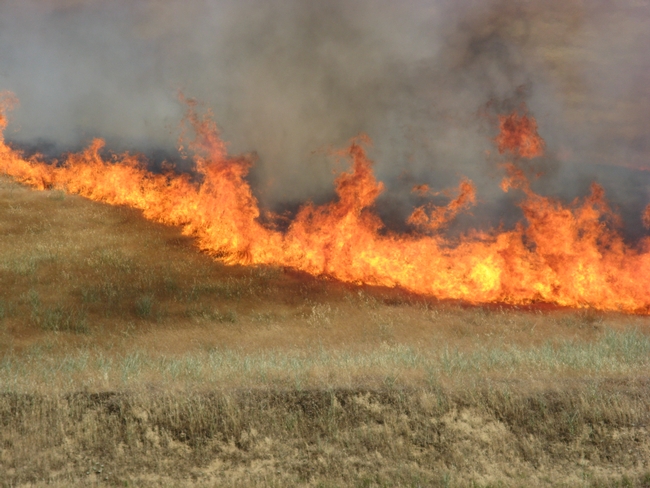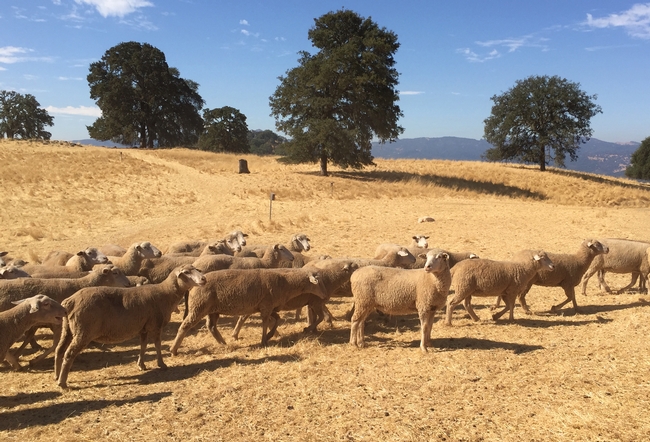Posts Tagged: Rebecca Ozeran
UC releases latest cost and returns for ranchers raising beef cattle
Among California's agricultural commodities, cattle rank fifth in revenue. The University of California Agriculture and Natural Resources' Agricultural Issues Center has released a new study showing the cost and returns of a beef cattle operation.
“Ranchers can use UC beef-cattle cost studies to guide their production decisions, estimate their own potential revenue, prepare budgets and evaluate production loans,” said Rebecca Ozeran, UC Cooperative Extension livestock and natural resources advisor for Fresno and Madera counties.
The study estimates costs and returns of a representative owner-operated beef cattle operation located on rangeland in the Central San Joaquin Valley and foothills of Madera and Fresno counties. The study describes a 200-head cow-calf operation and includes pasture costs on the basis of the rental per animal unit month.
The analysis is based upon a hypothetical cow-calf operation, where the cattle producer both owns and leases rangeland. The “typical” ranch in the Central San Joaquin Valley is an owner-operated cow-calf operation, often relying on multiple private leases. The operations described represent production practices and materials considered typical of a well-managed ranch in the region.
Input and reviews were provided by ranch operators, UC Cooperative Extension farm advisors and other agricultural associates. The study describes in detail the assumptions used to identify current costs for the cow-calf herd, material inputs, cash and non-cash overhead. The cost calculations in this study are based on economic principles that include all cash costs and overhead costs. The study also includes a “ranging analysis” to show potential net returns over a range of market prices. Other tables show the average costs and revenues, the distribution of monthly costs and revenues over the year, and the annual equipment, investment and business overhead costs.
“In addition to producing meat, cattle play an important role in California's landscape and environment by grazing on vegetation that could fuel wildfire,” Ozeran said. “Ranching therefore has ecological and social impact on rural and fire-prone communities. If we can help ranchers remain economically viable, then we help support local stewardship of productive natural landscapes and contribute to fire resiliency and food security.”
The new study, “Sample Costs for Beef Cattle, Cow-Calf Production - 200 Head Operation, Central San Joaquin Valley - 2019” is authored by Ozeran, Donald Stewart, staff research associate of the University of California Agricultural Issues Center; and Daniel A. Sumner, director of UC Agricultural Issues Center.
This study and other sample cost of production studies for many commodities are available for free download at http://coststudies.ucdavis.edu. The program is supported by UC Agriculture and Natural Resources, including both Agricultural Issues Center and UC Cooperative Extension, and the UC Davis Department of Agricultural and Resource Economics.
For more information, contact Stewart at (530) 752-4651 or destewart@ucdavis.edu. To discuss this study with a local UC Cooperative Extension farm advisor, contact your county UC Cooperative Extension office https://ucanr.edu/About/Locations or contact Rebecca Ozeran at (559) 241-6564 or rkozeran@ucanr.edu.
Livestock owners asked to weigh in on fire impact
Fire Impact and Risk Evaluation (FIRE) survey.
“We will aim to quantify the impact of wildfires in different livestock production systems,” said Beatriz Martínez López, director of the Center for Animal Disease Modeling and Surveillance in the UC Davis School of Veterinary Medicine. “The idea is also to create a risk map showing areas more likely to experience wildfires with high economic impact in California.
“This economic and risk assessment, to the best of our knowledge, has not been done and we hope to identify potential actions that ranchers can take to reduce or mitigate their losses if their property is hit by wildfire.”
Martínez López, who is also an associate professor in the Department of Medicine & Epidemiology at UC Davis, is teaming up with UC Cooperative Extension livestock and natural resources advisors and wildfire specialists around the state to conduct the study.
“Right now, we have no good estimate of the real cost of wildfire to livestock producers in California,” said Rebecca Ozeran, UC Cooperative Extension livestock and natural resources advisor for Fresno and Madera counties. “Existing UCCE forage loss worksheets cannot account for the many other ways that wildfire affects livestock farms and ranches. As such, we need producers' input to help us calculate the range of immediate and long-term costs of wildfire.”
Stephanie Larson, UC Cooperative Extension livestock and range management advisor for Sonoma and Marin counties, agreed, saying, “The more producers who participate, the more accurate and useful our results will be.”
“We hope the survey results will be used by producers across the state to prepare for wildfire,” said Matthew Shapero, UC Cooperative Extension livestock and natural resources advisor for Ventura and Santa Barbara counties, “And by federal and private agencies to better allocate funds for postfire programs available to livestock producers.”
The survey is online at http://bit.ly/FIREsurvey. It takes 15 to 30 minutes, depending on the number of properties the participant has that have been affected by wildfire.
“Survey answers are completely confidential and the results will be released only as summaries in which no individual's answers can be identified,” said Martínez López. “This survey will provide critical information to create the foundation for future fire economic assessments and management decisions.”





